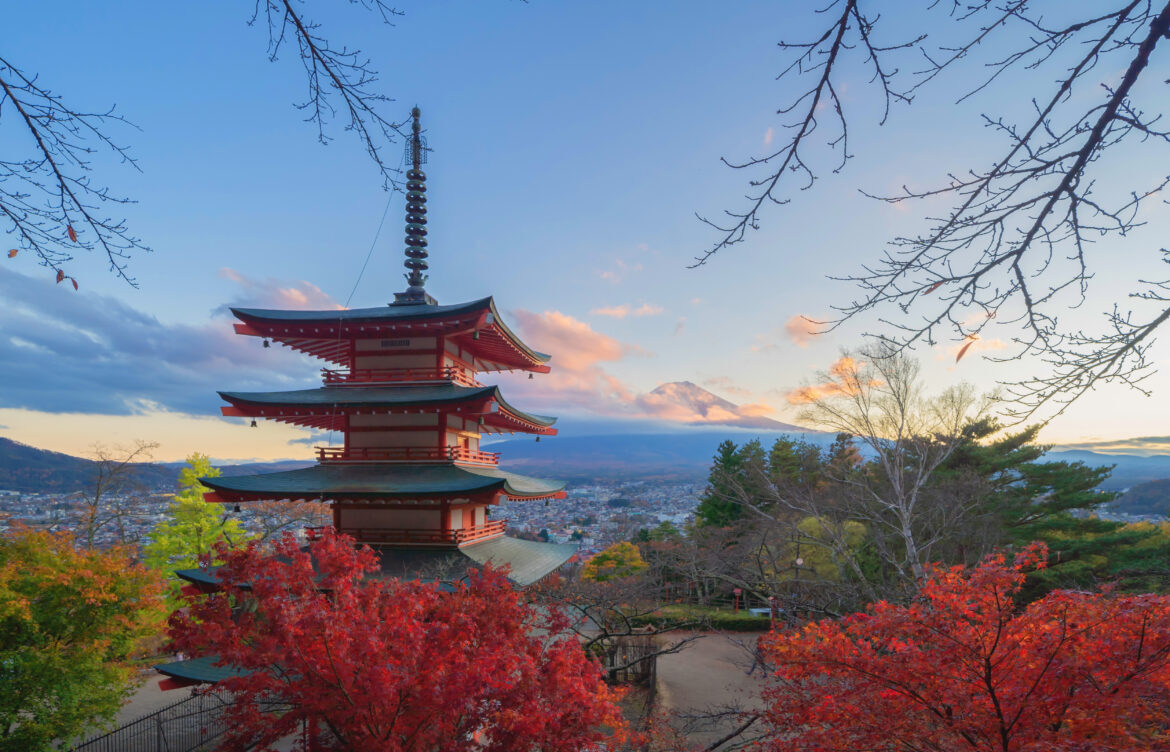
7 Must-Do Activities on Japan’s Kōyō Trail (The Stunning Fall Foliage Route)
I’ll be honest with you.
I thought I’d seen fall colors before. Growing up, autumn meant orange leaves and pumpkin spice everything.
Then I walked Japan’s Kōyō Trail.
And I realized I hadn’t seen anything yet.
What Is the Kōyō Trail?
Kōyō means “fall foliage” in Japanese. And this trail? It’s nature showing off.
The route stretches through central Japan. It connects ancient temples with mountain paths. Every turn reveals another burst of red, orange, and gold.
Peak season runs from late October through early November. But here’s the thing: crowds follow the colors.
I’m going to share seven activities that made my trip unforgettable. Some are popular. Others are hidden gems I stumbled upon.
1. Start at Kyoto’s Tofuku-ji Temple
This temple complex isn’t a secret.
Thousands of tourists pack the viewing bridge during peak season. But there’s a reason everyone goes.
The Tsutenkyo Bridge overlooks a sea of maple trees. When the leaves turn, it looks like someone set the valley on fire.
My tip: Get there at 6 AM when it opens. I did this and had the bridge almost to myself for 20 minutes. The light was soft. The air was cool. No elbows in my ribs.
By 8 AM, it was packed.
2. Take the Scenic Train Through Arashiyama
The Sagano Romantic Train runs along the Hozugawa River gorge.
It’s a 25-minute ride through mountains covered in autumn colors. The train moves slowly. Windows open so you can feel the breeze.
I sat on the right side going out. That’s where the best views are.
What surprised me: The fifth car has no windows at all. Just open air. It’s colder, but the photos are worth it.
Book tickets a month ahead if you can. This train sells out fast.
3. Hike to Kurama-dera Temple
This hike kicked my butt.
The trail climbs up Mount Kurama. It’s about 2 miles, but it’s mostly stairs. Stone steps worn smooth by centuries of pilgrims.
The forest canopy turns into a tunnel of red and gold in fall. Every 10 minutes, I stopped to catch my breath and take photos.
At the top sits Kurama-dera Temple. The view of the valley below made my legs forget they were tired.
Bonus: You can take a cable car up if the stairs aren’t your thing. No judgment. Save your energy for the walk down.
4. Wander Through Nara Park at Sunset
Nara Park is famous for its deer. Over 1,000 of them roam free.
But in the fall, the real stars are the trees.
I went around 4 PM, when the afternoon light turns everything golden. The deer posed under maple trees like they knew I needed the perfect shot.
Buy deer crackers for 200 yen. The deer will bow to you before taking them. It’s ridiculously polite and adorable.
Pro tip: Walk past the main temple area. Head toward Kasugayama Primeval Forest. Fewer people. More magic.
5. Stay at a Ryokan in Takao
Takao is a small mountain town near Kyoto.
It’s quieter than the big tourist spots. The fall colors here are just as stunning, but you’ll share them with fewer people.
I stayed at a traditional ryokan (Japanese inn). Tatami mat floors. Futon beds. A hot spring bath with a view of the mountains.
Dinner was kaiseki—multiple small courses of seasonal food. Everything looked like art.
The best part: Waking up to mist rolling through the valley. Red leaves are floating on the surface of the outdoor bath.
This is where I finally understood what “peaceful” means.
6. Visit Eikando Temple at Night
Most temples close at sunset.
Eikando stays open for night illuminations during the fall.
They light up the gardens and buildings. The maple leaves glow like they’re on fire. Reflection pools double the colors.
I went on a Tuesday night. Still crowded, but manageable.
The path winds through the garden. Each turn reveals a new scene. A pagoda framed by red leaves. A pond mirroring the trees above.
Fair warning: It’s cold at night. Bring a jacket. And get there right when it opens at 5:30 PM for the best spots.
7. Eat Everything (Seriously)
Fall in Japan isn’t just about looking at leaves.
It’s about eating them, too.
Tempura maple leaves are a thing. They’re sweet, crispy, and surprisingly good.
Every shop sells sweet potato snacks. Roasted chestnuts. Pumpkin everything.
I tried matcha soft serve topped with candied chestnuts. My life changed.
My favorite find: A tiny cafe in Arashiyama served fall-themed wagashi (traditional sweets). Each one looked like a miniature autumn leaf. Almost too pretty to eat.
Almost.
What I Learned on the Kōyō Trail
Japan takes fall seriously.
The colors are incredible. But it’s more than that.
It’s the way locals celebrate the season. The special foods. The night illuminations. The poems written about maple leaves.
I went expecting pretty views. I got that, plus a new appreciation for slowing down and paying attention.
Plan Your Trip
Best time to go: Late October to mid-November. Check fall foliage forecasts online. They’re surprisingly accurate.
Getting around: Buy a JR Pass if you’re visiting multiple cities. It pays for itself after a few train rides.
Accommodation: Book early. Peak season fills up fast. Ryokans book up months in advance.
What to pack: Layers. Mornings are cold. Afternoons warm up. You’ll be doing a lot of walking, so comfortable shoes are a must.
The Truth About Travel
Here’s what nobody tells you:
The most popular spots are crowded for a reason. They’re stunning. But the magic happens in the quiet moments.
The train ride between destinations. The small temple you stumble upon by accident. The older woman who smiled when I bowed to her deer.
Those are the memories that stick.
Ready to plan your own adventure?
I share more hidden gems, honest travel tips, and stories from the road over at The Chica Travelista. No fluff. No tourist traps. Just real experiences that help you travel better.
Join me. Your next adventure is waiting.
